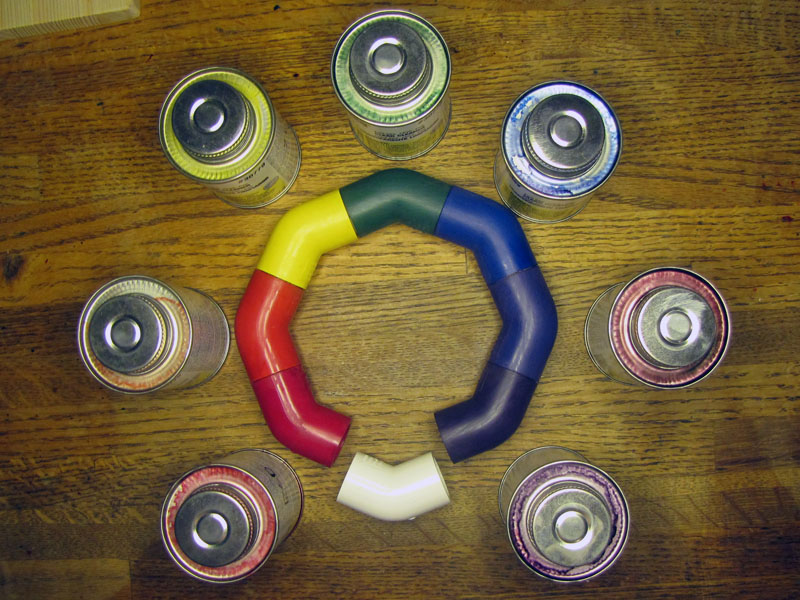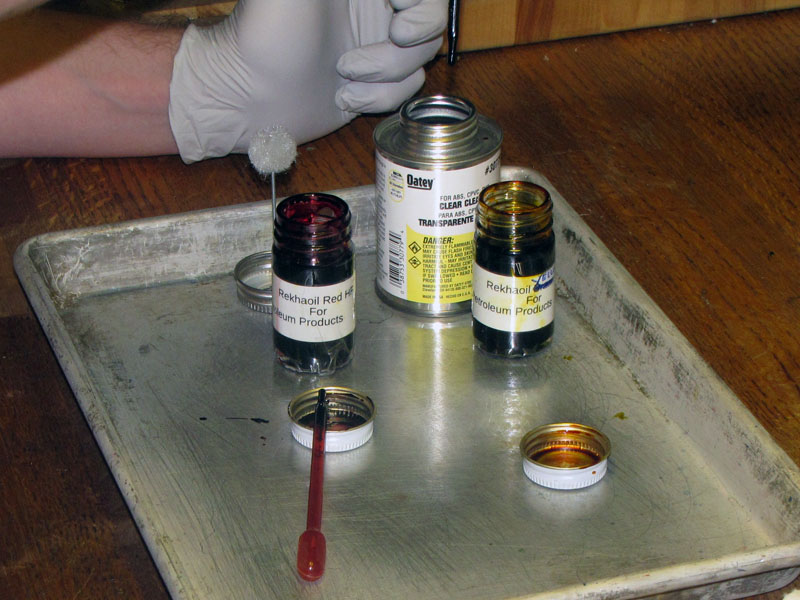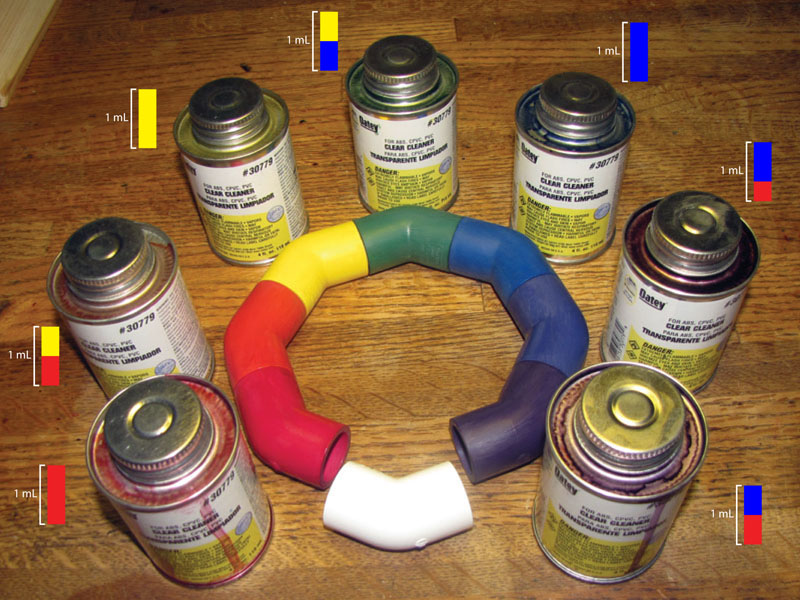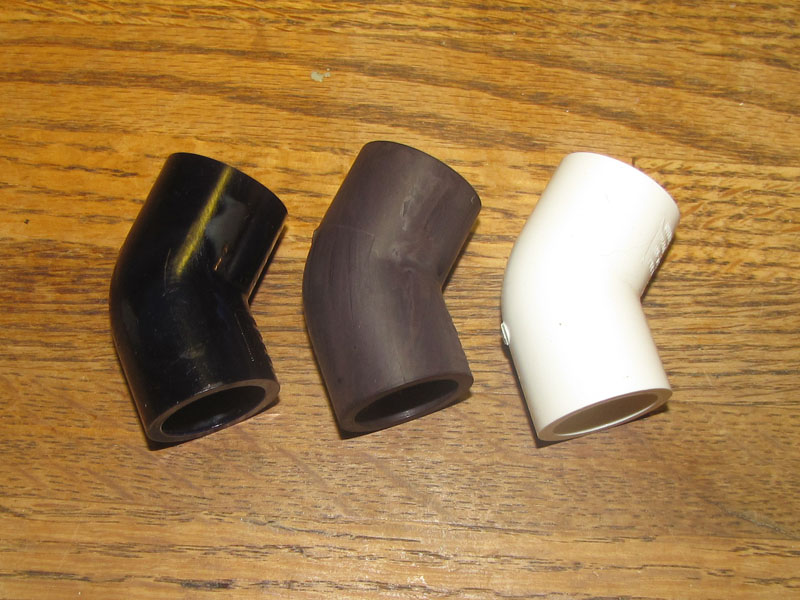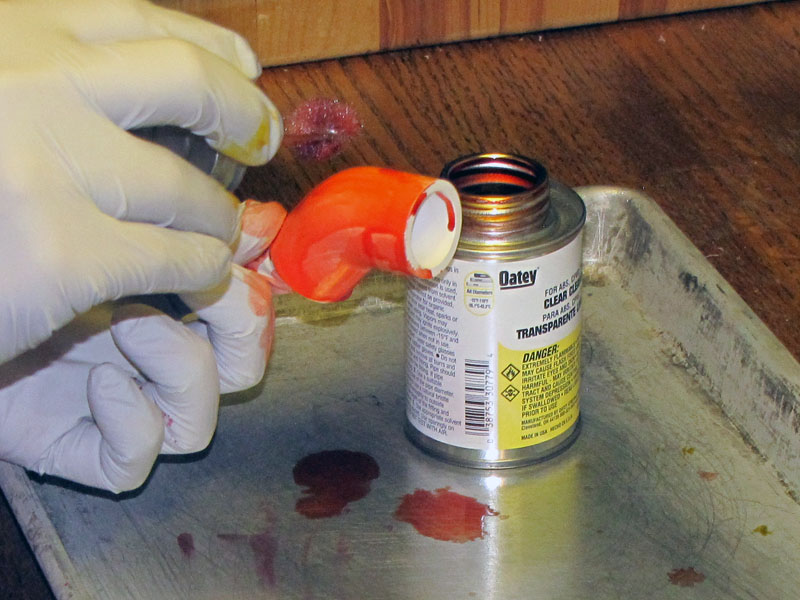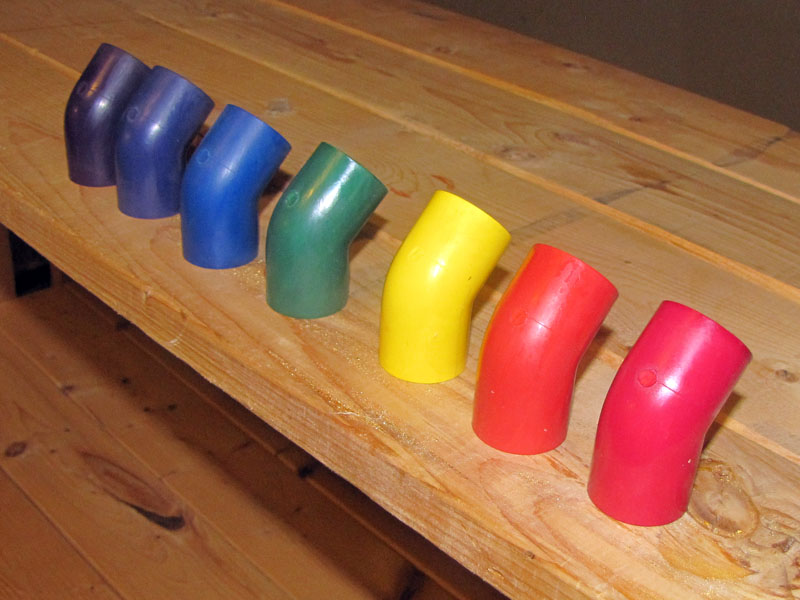PVC is great: cheap, common, easy to work, and easy to join temporarily or permanently. Only problem is, it’s kinda ugly, much of which owes to the fact that it only comes in white, gray, sometimes black, and (if you’re willing to pay through the nose) clear. “Furniture grade” PVC pipe can sometimes be found with integral color, but you’re limited to factory shades and if you want matching elbows, tees, or other fittings, you’re out of luck, because fittings only come in white.
Sure, you can paint it, but PVC doesn’t take paint all that well, and the paint is prone to flake and screws up the dimensional tolerances. With stain, you get color that doesn’t flake or add thickness, so you can stain pipe and fittings different colors before assembly and still expect them to fit. You can even take them apart and reassemble them in some other way without affecting the finish.


